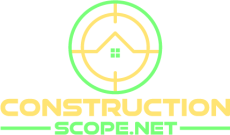Welcome to the future of design: SketchUp modeling services. This innovation sets the stage for creatives, architects, engineers, and designers alike. It is their playground, where they craft and showcase extraordinary projects effortlessly.
SketchUp’s user-friendly interface and powerful tools have transformed it into a key software resource across industries. Prospects look bright, as exciting trends and innovations continue to reshape how we design and communicate our ideas.
Let us embark on an exploration of these emerging trends, shaping this dynamic software landscape. Understanding what lies ahead could enrich your personal or professional journey with SketchUp.
Parametric Design: The Dawn of a New Era in SketchUp Modeling
Parametric design is a shining star in the constellation of SketchUp modeling trends. Thanks to parametric plugins, designers now wield the power to weave dynamic models. These models respond to changes in parameters, providing a fast lane for the exploration of design options. Synthesizing parametric design with SketchUp’s user-friendly interface has broadened its accessibility. This agility enables quicker iterations and provides a wider palette for design exploration.
Cloud-based Platforms: The Powerhouse of Collaboration
Collaboration has been redefined by cloud-based platforms in SketchUp projects. They enable real-time collaboration, bringing together team members located anywhere in the world on a shared model. This not only boosts productivity but also streamlines the design process, ensuring everyone sings from the same hymn sheet.
Renderers: The Artists Behind Enhanced Realism
Rendering plugins have elevated SketchUp modeling to new levels through breathtaking photorealistic visuals. With simulated lighting, materials, and textures at their fingertips, designers can bring designs to life as never before. Technological advancements in rendering have allowed project presentations with an unprecedented level of realism.
Extensions: Streamlining Your Workflow
The SketchUp Extension Warehouse stands as an all-you-can-eat buffet for enhancing functionality and optimizing workflow. From automated modeling tools to vast material libraries. These extensions cater precisely to user needs while expanding the possibilities within SketchUp modeling.
Revolutionizing Design with Innovative Services
Of late, SketchUp modeling services are advancing rapidly due to innovative technology. These services leverage sophisticated algorithms and machine learning to automate various aspects of the modeling process, from generating complex geometries to optimizing designs for manufacturing.
Virtual Reality: The Future Beckons
With the advent of virtual reality (VR), architectural visualization has undergone a sea change. VR integration allows designers and their clients to dive into virtual spaces, enabling a better understanding of scale, proportion, and spatial relationships.
SketchUp’s integration with VR platforms like Oculus Rift and HTC Vive brings stakeholders closer than ever before. It empowers them to experience spaces before they are built, reducing the chances of costly design alterations.
The Fusion of 3D Printing with SketchUp Modeling
The marriage of SketchUp modeling with 3D printing technology has opened numerous possibilities for prototyping and manufacturing. Intricate models can now be created and tested before production. This reduces both costs and time-to-market in many areas, including product design, architecture and healthcare.
CAD Drafting Services: Precision at its Best
Beyond SketchUp modeling services, CAD drafting services have proven invaluable across industries. These services provide precise drawings that adhere strictly to industry standards. With CAD drafting services handling the technicalities, designers can focus on their creative processes.
With the ability to create precise 2D and 3D models, streamline workflows, and enhance visualization, CAD drafting services have become an invaluable tool across various industries.
Sustainable Design Meets SketchUp Modeling
Sustainability is gaining traction in architecture and engineering circles, with SketchUp modeling playing an essential role in this revolution. Tools provided by Sketchup enable energy analysis, daylight simulations and material optimizations for environmentally friendly designs.
By simulating factors like sunlight exposure and airflow patterns, designers can finetune their work for minimal energy consumption and optimal use of natural resources. An extensive library offers sustainable materials allowing architects informed choices for eco-friendly building materials.
Conclusion
Looking ahead at the future of Sketchup modeling reveals evolution will continue, driven by advancements in technology, collaboration tools and sustainability factors. The software’s accessibility is set to enhance efficiency while making bigger impacts across industries.
Whether you’re an architect, a designer, or an engineer, these emerging innovations promise to better your workflow and allow you to create designs that resonate. So, power up your VR headset, delve into the world of parametric design, and unlock the full potential that SketchUp modeling offers.

